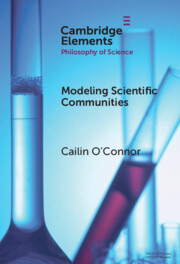Refine search
Actions for selected content:
5 results
Advance Market Commitments and Their Role in Public Innovation
-
- Journal:
- Journal of Law, Medicine & Ethics ,
- Published online by Cambridge University Press:
- 26 August 2025, pp. 1-4
-
- Article
-
- You have access
- Open access
- HTML
- Export citation

Modelling Scientific Communities
-
- Published online:
- 30 November 2023
- Print publication:
- 21 December 2023
-
- Element
- Export citation
11 - An Open Science Workflow for More Credible, Rigorous Research
- from Part III - Your Research/Academic Career
-
-
- Book:
- The Portable Mentor
- Published online:
- 21 July 2022
- Print publication:
- 04 August 2022, pp 197-216
-
- Chapter
-
- You have access
- Open access
- HTML
- Export citation
19 - Threats to the Scientific Credibility of Experiments: Publication Bias and P-Hacking
- from Part V - Experimental Reliability and Generalizability
-
-
- Book:
- Advances in Experimental Political Science
- Published online:
- 08 March 2021
- Print publication:
- 01 April 2021, pp 354-368
-
- Chapter
- Export citation
28 - Reproducibility in Clinical Psychology
- from Part VII - General Analytic Considerations
-
-
- Book:
- The Cambridge Handbook of Research Methods in Clinical Psychology
- Published online:
- 23 March 2020
- Print publication:
- 02 April 2020, pp 371-382
-
- Chapter
- Export citation
